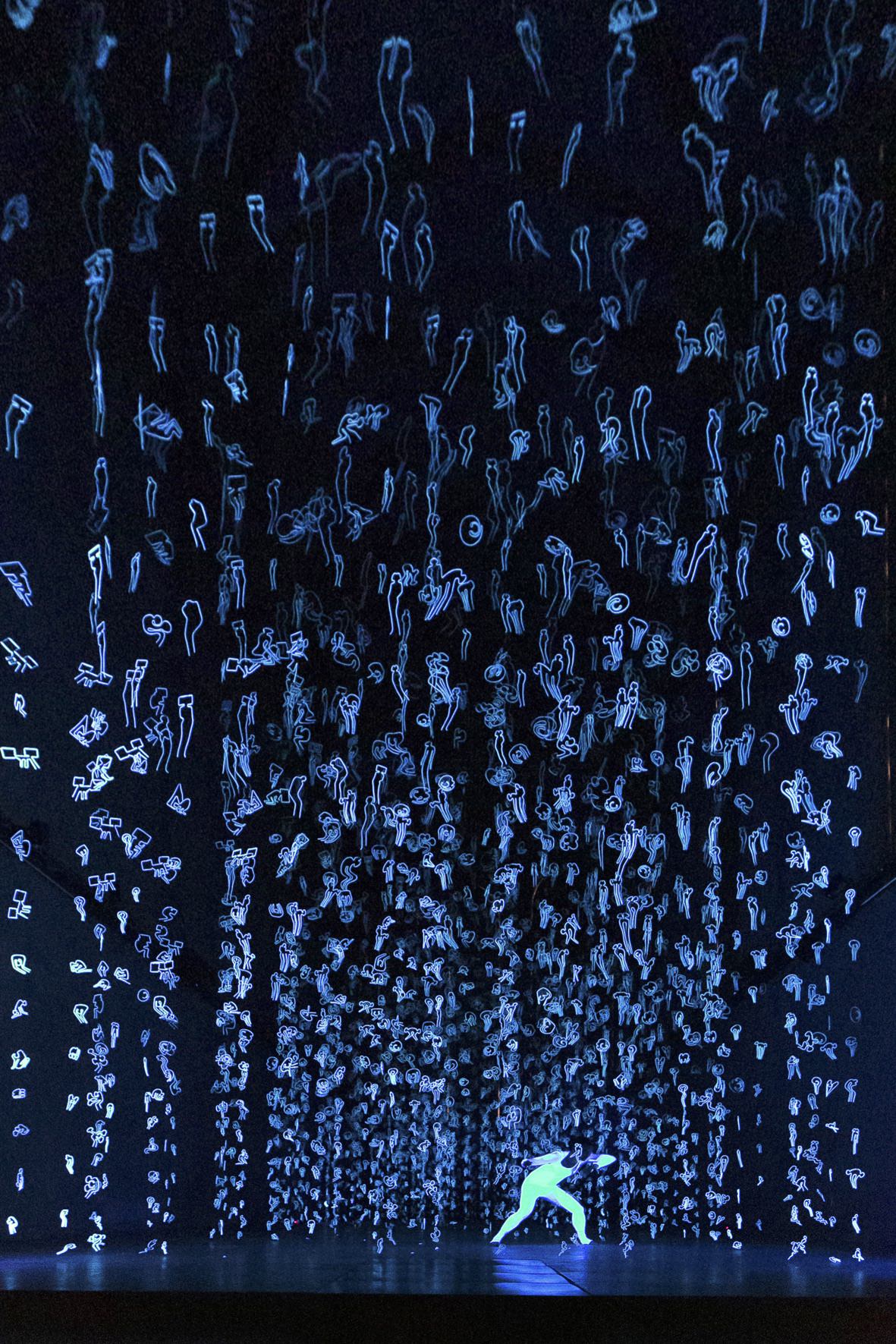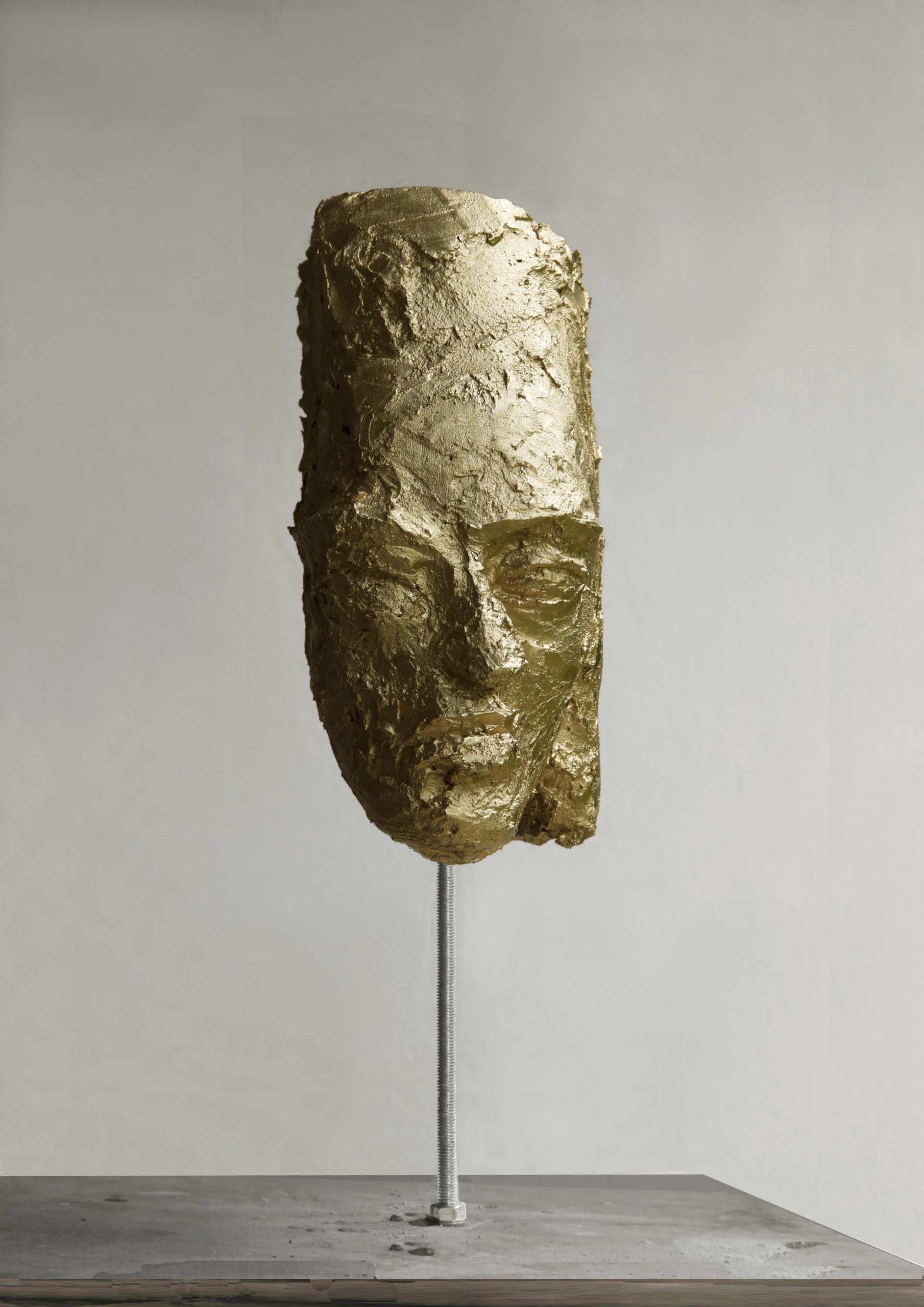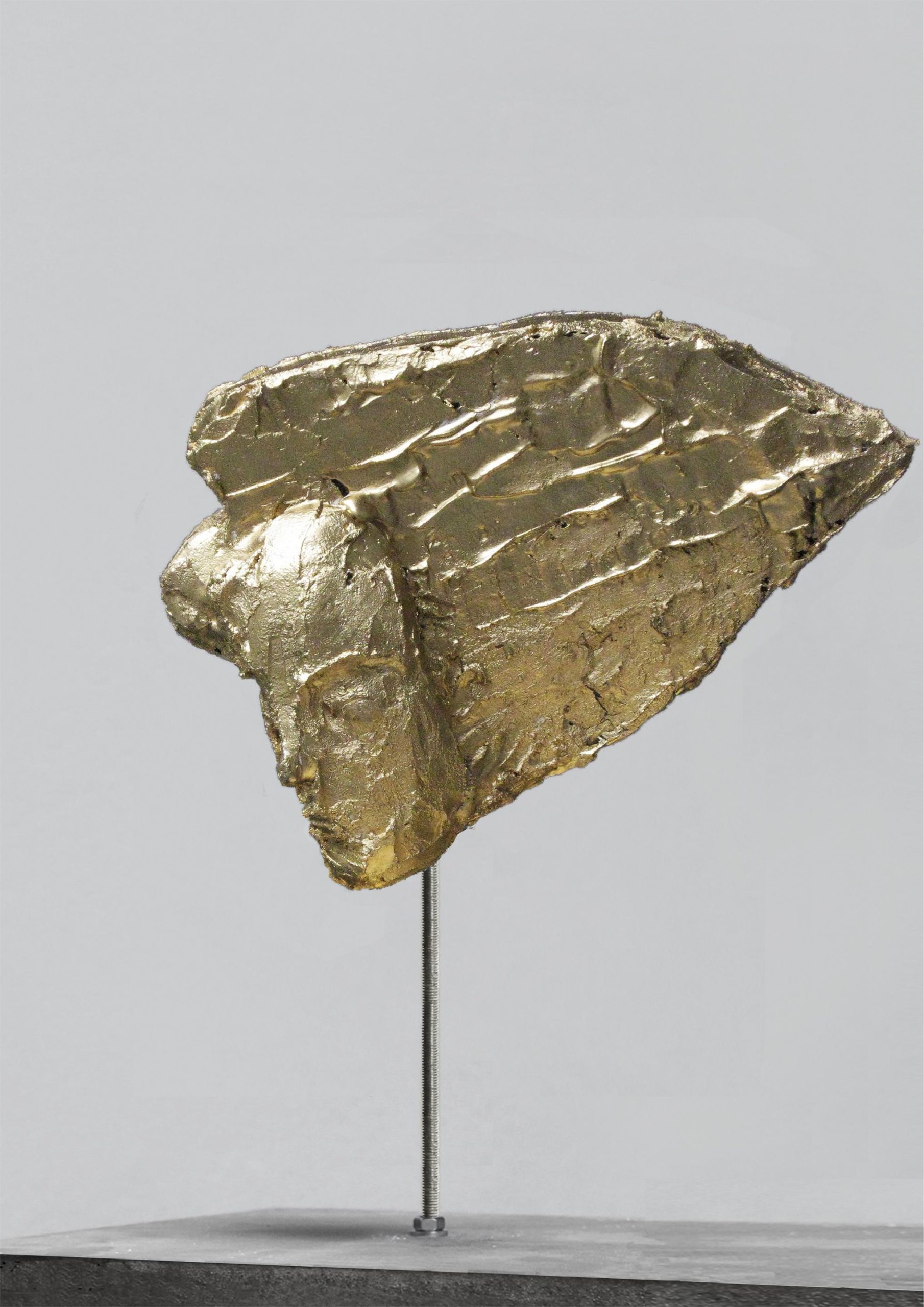The multi-disciplinary visual artist and performer Marianne Maderna likes to work outdoors, under the sky. Even in Austria’s cold winter months, her work is so physical it keeps her warm enough. Made with wire and clay, her sculptures and installations are a commentary on the human condition, the violence of our society, and the suppression of women.
In 2015 she showed her series “Radical Busts,” in which she made busts of famous historical women that have been left out of historical halls. That same year, she fashioned floating skis, which she used to walk across the Danube as a glowing Popesse.

Installation view of “HUMANIMALS”
© Marianne Maderna
Whitewall met with Maderna in Vienna, while her installation “HUMANIMALS / ACADEMY MM”—glowing wire hanging sculptures and a video installation—was exhibited at Salzburger Kunstverein in Salzburg (May 16–21, 2017). This year, her work was also on view at Kunstverein Kärnten in “AHEAD of the Game” (May 2–June 24, 2017).
WHITEWALL: Can you tell us about your ongoing series of wire sculptures, “HUMANIMALS” and its presentation in Salzburg?

Installation view of “HUMANIMALS”
© Marianne Maderna
MARIANNE MADERNA: It’s in a space of about 25 square meters, and many wire sculptures hang from the ceiling. This was previously shown at a Dominican church in Krems in Lower Austria in 2013. There were about six thousand sculptures there. Mostly, they depict fighting men and they are illuminated in black light. I made drawings, scanned them, and made a video to create a projection that climbs across the body of the viewers.
All my sculptures are very heavy in theme, very light in material, but quite heavy in subject.

Installation view of “RADICAL BUSTS”
© Marianne Msderna
WW: A couple years ago, you walked across the Danube river dressed as a Popesse, lit up with LEDs and using floating skis you created. Can you tell me more about the performance?
MM: It was dark, around 5:30 p.m., and the Danube was really high at the time. I had developed some special skis and I walked over the Danube. Actually walking on the water, not like Christo—I was able to really go. I had sticks and my shoes were like catamarans. It was difficult, but I crossed the river, yes! I was illuminated like a Popesse.

Installation view of “RADICAL BUSTS”
© Marianne Msderna
The wind was quite strong and there were waves. I had on a diving suit wired with LED lights. I had a battery pack. When I arrived on the side, at the dock, the people on the boats didn’t know what they were seeing!
WW: Let’s talk about your series “Radical Busts.” In 2015, during the 650th anniversary of the University of Vienna, you showed around 30 busts of famous women in a hall next to over 150 permanently installed busts and plaques of male notables. What was the starting point for this project?
MM: I was working for several years on this project. There are no female busts anywhere. And hardly any biographies of famous women in history. I’m not able to write biographies, but I can write a poem and create a bust. The university was the perfect setting. There are only male busts all around.
WW: Did you have a specific woman for each bust? Was it a personal selection?
MM: Yes, they were important to me. There is Janice Joplin, Marie Curie, Eva Hesse, Virginia Woolf, Maria Montessori, Mary Shelley, Sylvia Plath, Josephine Baker, Frida Kahlo, Gertrude Stein, Susan Sontag . . .
I studied their faces and also their lives. By reading about them, I was able to get into their mind, their inner mood. And something happened to me when I did that. I climbed inside that person; I acted out their life. I’d put that down in a poem, or in the shape of their face.
WW: Was that something you were comfortable doing?
MM: No, sometimes not. Mostly not. Their lives were difficult. When I finished, I was happy. I completed something and I didn’t swallow, but I spit something out.
WW: Can you tell us about your studio? What’s it like?
MM: Mostly, I’m working in the open space, out in the open under the trees, in the grass. I don’t like working inside. When it’s raining, of course I go inside. But mostly I’m working outside. I have strong work, it’s physical, so I stay warm even in the cold.
It’s about an hour and 15 minutes outside Vienna. I live there, too, in a monastery [laughs]. I found it and renovated it with my husband, who has passed. We were together 45 years. It was built in 1380. We renovated it for 30 years.
It is very peaceful, very silent, and enormous. Birds all around. I have my garden, my plants. And a wood nearby where I walk in the morning.








